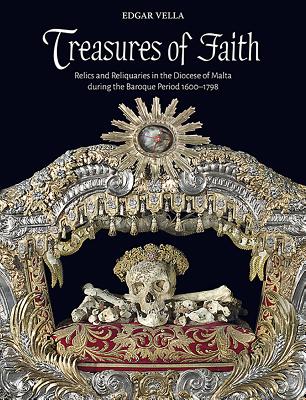
Treasures of Faith: Relics and Reliquaries in the Diocese of Malta During the Baroque Period 1600-1798
Treasures of Faith closely at the period between 1600, with the early documented translation of relics, and 1798, when the Knights left Malta.
| Quantity | Price | Discount |
|---|---|---|
| List Price | $75.00 |
Non-returnable discount pricing
$75.00
Book Information
| Publisher: | Midsea Books |
|---|---|
| Publish Date: | 03/30/2016 |
| Pages: | 240 |
| ISBN-13: | 9789993275626 |
| ISBN-10: | 999327562X |
| Language: | English |
Full Description
The ancient Christian cult of the relics and the rich and enthralling works of art created to house them is a witness to the need of man to be in contact with the beyond. The art of the reliquary is an art of boxes, caskets, and receptacles housing mysteries. An art of amulets and pendants of elaborate goldsmiths' and jewelers'' creations made to hold the mortal remnants of the saints and other objects once believed to have touched Jesus Christ himself, the Blessed Virgin, or the saints. It is an art of rich things formed to house the poorest and the most poignant memorials of men and women remembered as holy: bones, locks of hair, and scraps of the blood-stained garments they once wore during the torments of their martyrdom. Yet, more perhaps than any other Christian art-form the study of relics is something neglected and under-appreciated, because it has traditionally been regarded both in Protestant orders and across broad swathes of the modern secular world, with fastidious and morbid distrust. Treasures of Faith discusses for the first time the rich tradition of relic veneration in Malta. It looks closely at the period between 1600, with the early documented translation of relics, and 1798, the end of the Knights' period which has contributed greatly in the divulgation of the cult and veneration of relics. The knights of Order of St John had arrived in Malta in 1530 after they had been expelled from Rhodes bringing with them a great treasure of relics. Their arrival in Malta followed the Counter Reformation: a period that witnessed the emergence of saints as exemplars of faith and saw the evolution of Christian art as a material expression of the sacred. During this time, churches, chapels, and monasteries served as repositories for relics that might comprise the bodily remains of the saints or other physical evidence of their existence, such as items once owned by them. Enshrined in precious containers studded with jewels, these sacred treasures rapidly became the focus of pilgrimage. Processions with the holy relics conserved in precious receptacles during feasts are a perpetuated extension of the pilgrimages towards churches and shrines during the middle ages. The author approaches the theme holistically, discussing not only their religious origins and significance but also the artistic value of the containers themselves. Furthermore, he categorizes these reliquaries in the diocese of Malta during the Baroque period in 21 different typologies, varying from pendants to phials, from ostensories to urns, and from arms to lantern. The volume is profusely illustrated with splendid photographs which have been purposely taken for this publication.

